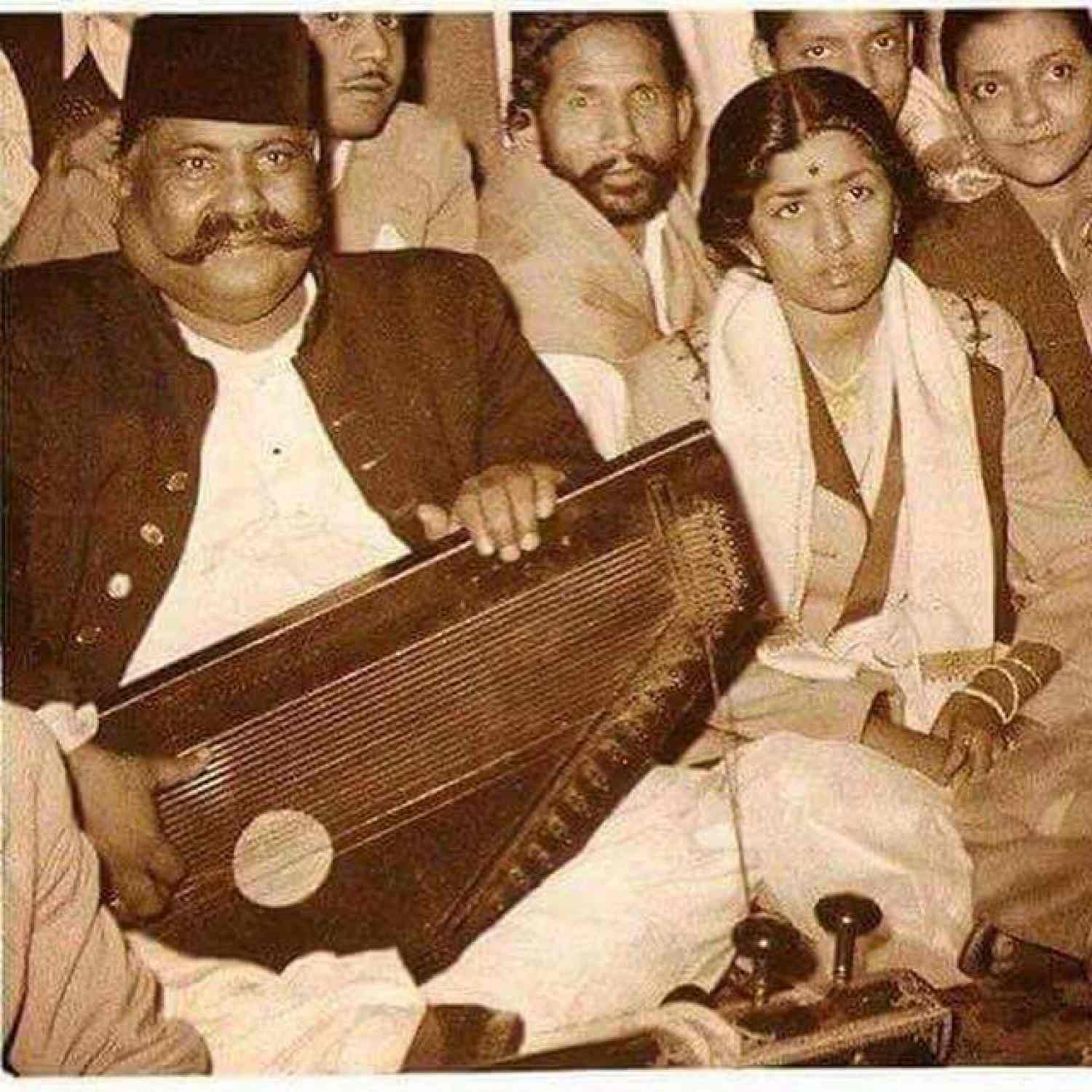

Bazooband khul khul jaaye
Film: Bazooband
Year: 1954
Composer: Mohammed Shafi
Raga: Bhairavi
The raaga timeline traditionally ends with Bhairavi, and we have come to the same stage in Raag-Lata. There are many raagas and indeed prahars that we have not sampled, and there remains much to explore even in the limited realm of this series.
Bhairavi nominally employs all komal (and shuddha m) swaras. However, the extended interpretation allows for all 12 notes to be employed. It is nominally a morning raaga but can be sung at any time of the day, earning it the sobriquet of ‘sada-suhagan’. It is considered to be an ancient melody, and finds favor with all types of musicians. You will find Dhrupads, Khayals, Taranas, Tappas, Thumris, Dadras, Ghazals, Bhajans and so on in this raaga. The finest renditions of Bhairavi are found in the Thumris of Banaras. Listen to one of its most charismatic voices Rasoolan Bai singing a traditional Thumri. Her Bhairavis are second to none. (Watch on YouTube).
As can be expected, there is an umpteen number of film songs based on this raaga. Let us listen to some Lata songs. The first one is a classic number Saanvare Saanvare from Anuradha. The music is by Pt. Ravi Shankar. It is a classic Radha-Krishna leela theme, and he infuses the song with a brightness reminiscent of his renowned orchestral pieces. Lata shines with her sparkling taans and murkis. In the second antara, the offbeat (anaghat) ‘bin bichare, kahenge saare’ followed by an emphatic sam on ‘radha’ is simply astounding. (Watch on YouTube).
Shankar Jaikishen has given Lata (and others) a huge number of Bhairavi songs. The raaga is used to convey untold sadness in this Seema song- Suno chhotisi gudiya ki. The sarod played by the redoubtable Ali Akbar Khan acts a second voice in this song. Lata misses nary a beat or note, and delivers a gem of a song. (Watch on YouTube).
Naushad also favored Bhairavi. In this perennial favorite- Do hanso ka joda from Ganga Jumuna, the sarangi accompaniment is by Pt. Ram Narayan. According this his son, the opening piece and the interludes that were played on sarangi were not pre-composed but played by Pt.ji impromptu. They are amazingly apposite. Lata negotiates the tune with ease in spite of the intricacies of the composition. The second antara ‘raat ki aas gayi…’ is difficult, and the pausing of all accompaniment for ‘banaa khel…’ before returning to the mukhada is sung with deceptive ease. (Watch on YouTube).
In this rare video clip, Baba Allaudin Khan teaches a Bhairavi cheez to Ravi Shankar. It is the only instance of his singing I have come across. (Watch on YouTube). Jaidev revealed his Maihar roots by adapting the same composition for Alaap. Lata, with Dilraj Kaur, sings the song really beautifully. It conveys a ‘samarpan bhaav’ tinged with sadness.. (Watch on YouTube).
The traditional Punjabi Heers follow the contours of Bhairavi, with very specialized harkats that are reminiscent of Tappas. They are typically sung without percussion, and have an exotic and sad beauty to them. Here is a Heer sung by Wadali brothers. (Watch on YouTube). Madan Mohan adapted a Heer for the doli song in Heer Ranjha, and Lata sings it very well. But the dramatic incidental music takes away somewhat from the song. Listen to Lata singing the traditional version live at Albert Hall which I find more compelling. She navigates the difficult harkats with poise. (Watch on YouTube).
The great U. Abdul Karim Khan immortalized the Bhairavi cheez ‘jamuna ke teer’ - you have to just listen to the recording to see why! (Watch on YouTube). C. Ramchandra has used the same basic cheez in this Devta song. The antaras are his own and blend nicely with the composition. We see a glimpse of Baithak ki Thumri here with the variations on ‘kaise aaon’ and the avarohi taan of ‘teer re~~’ before the tihai at the end of each antara is breathtaking. (Watch on YouTube).
Aftab-e-mausiqi U. Faiyaz Khan sang the thumri ‘baju bandh khul khul jaaye’ with such grace that it is one of the gold standards of Bhairavi. (Watch on YouTube).
Mohd. Shafi did well to use the opening of this Thumri for the title song of Bazooband, which is the main song today. There are many attractive features of the song. The opening alaap and the couplet that follows are excellent. The mukhada retains the appeal of the thumri but the line ‘kahe mano na mano’ uses layakari and variations to convey a coquettish mood. The hoary tradition of using pieces of poetry in the middle of Dadras and Thumris is evoked with the two ashaar without percussion. The song rounds off with a covey of beautiful taans. It is a fantastic example of a film Bhairavi.
Author info is not available!